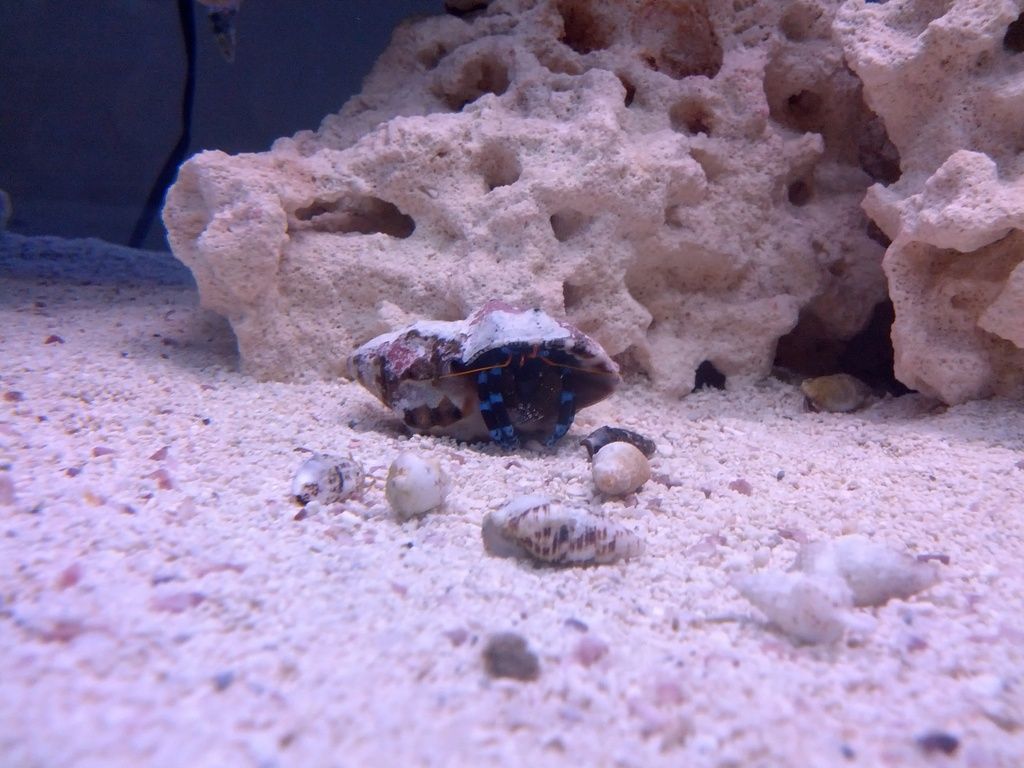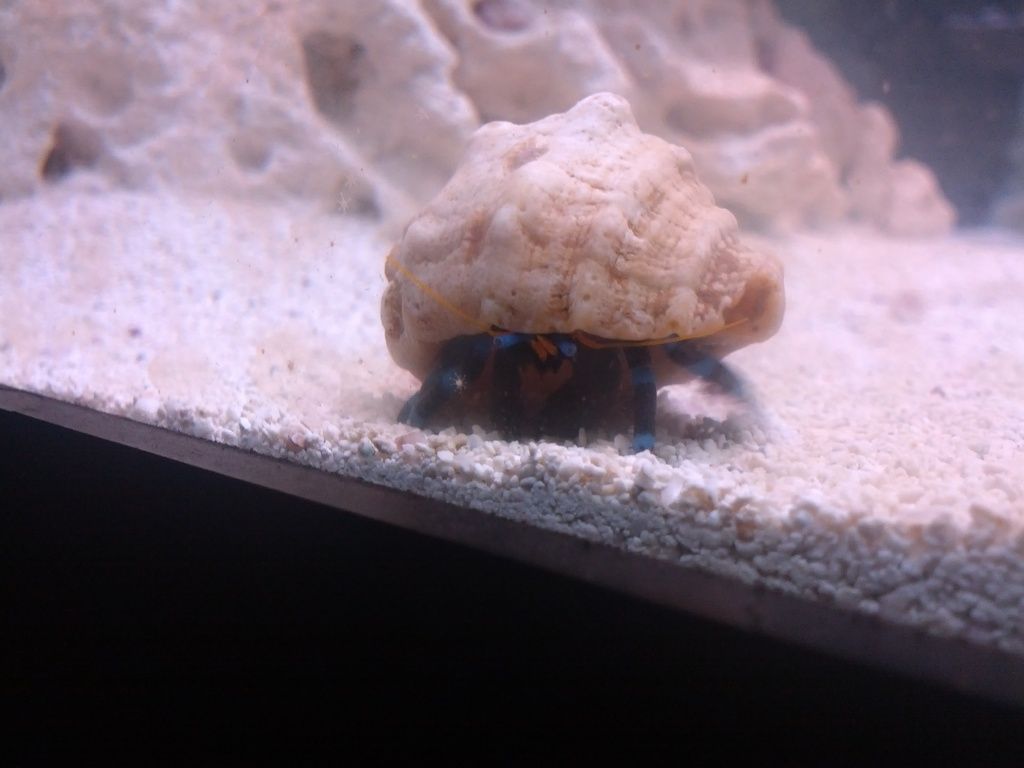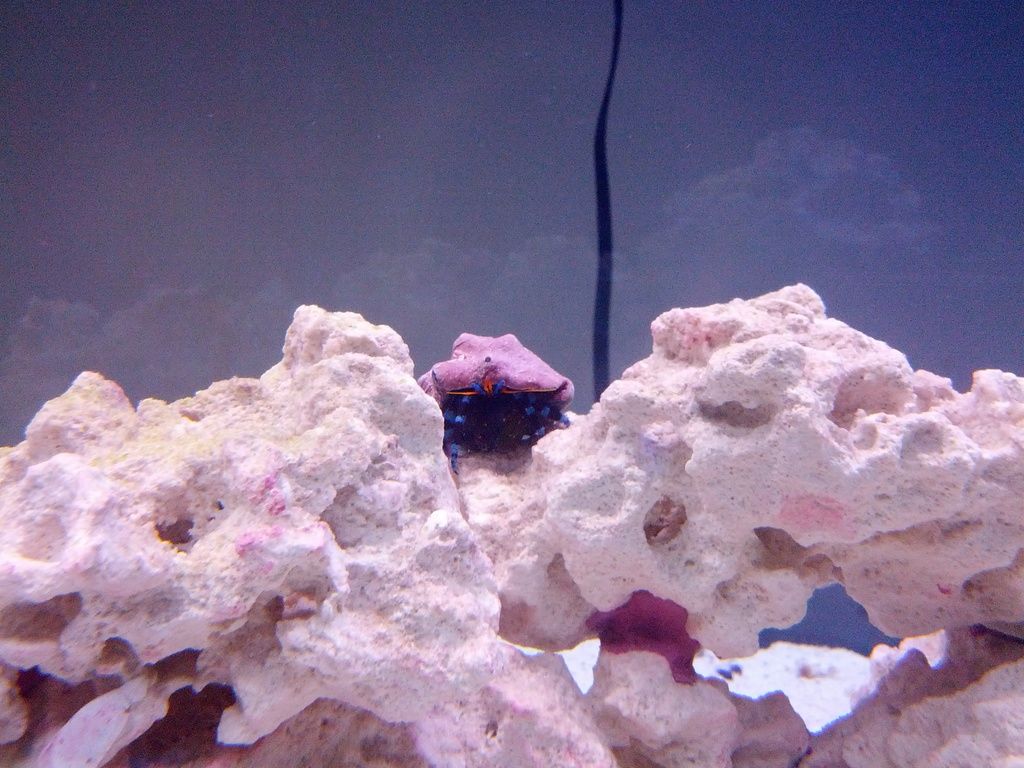
 |
|
#11
|
|||||
|
|||||
|
You've jinxed it now, lol.
|
|
#12
|
||||
|
||||
|
Well thats a first, not wanting free coral and asking for algae...lol Don't worry, you start adding fish and your tank will figure a way of growing algae. With an empty tank there is no nutrients for algae to eat, once you start adding fish, food and poop you'll be on your way...
Ya your lights wouldn't support the monti at all. Just thought I'd offer since we're neighbours (well close enough, maple ridge isn't that big). Once you get your LEDs going and if I still have frags around you should be ok. |
|
#13
|
|||||
|
|||||
|
Well its not the case of not wanting the free coral, but rather I don't want to kill said free coral lol.
And there is food going in the tank-CB ( my coral banded shrimp ) gets a small piece of clam once a week, and a few mysis 3 x a week. Hermits clean up what he leaves. I think my lack of algae is probably because of the phosphate and nitrate removing stuff in the sump, I thought I would be proactive-maybe too much so. Its okay wardog-I touched wood before I typed that so no jinx ;p |
|
#14
|
||||
|
||||
|
Trust me, you don't want algae. Enjoy the algea free life you're living right now. lol
|
|
#15
|
|||||
|
|||||
|
A Quick update-Just got my Coralbox DC700 skimmer delivered ( only waited 3 months for it lol) Looks amazing-good quality construction and solid acrylic pieces-looks way bigger in person than any picture-but it fit perfectly in my sump. Now to let it break in, so far producing a ton of bubbles.
|
|
#16
|
|||||
|
|||||
|
I must say its fun watching the rise and fall of various populations in the Tank. First I had diatoms, the copepods totally destroyed it and I had millions of them all over the glass, then I got hydroids and now the copepods are gone and I have hydroids all over my glass, they are slowly going away as their copepod food source is now gone. And slowly algae is starting to grow again.
I added a few new additions to the tank, electric blue hermits named Goliath, Bruno and Col (short for Colossus) and a few bumble bee snails.    They are fun to watch lumbering around the tank  Last edited by rsisvixen; 03-15-2015 at 06:02 AM. Reason: spelling |
|
#17
|
|||||
|
|||||
|
An update on my lone vanderbuilt chromis, halfway through quarantine now, still eats like a pig. But alas he got ick ( wondering if thats what caused his buddies to keel over the first night)
Using a product called hydroplex, so far pretty impressive, first treatment cleared up all his ick overnight. Got to the second treatment and tank was looking a little murky ( had taken carbon out ) so added some filter pads but didn't realise it was carbon impregnated ( they really need to put that on the label) so overnight he had the white spots again. So out came the pads and restarted treatment. Cleared up again really fast, its around 4 treatments, did the 3rd tonight and last is due on wednesday. Then I guess its quarantine reset back to 0 and wait another 4 weeks. Thinking of setting up a TTM as well. |
|
#18
|
|||||
|
|||||
|
A caution in thinking medication is working because you see spots one day then none the next. This is a quote from RC with full credit to Snorvich and a thread he started. And this is why I'm a huge proponent of the TTM over anything else, because it totally interrupts the life cycle of this parasite:
The life cycle of this parasite is interesting and is important to understand when evaluating a treatment. The stage where the parasite is attached to a fish is called a trophont. The trophont will spend three to seven days (depending on temperature) feeding on the fish and that is what you see symptomatically when you see "salt sprinkled on the fish". After that, the trophont leaves the fish and becomes what is called a protomont. This protomont travels to the substrate and begins to crawl around for usually two to eight hours, but it could go for as long as eighteen hours after it leaves it's fish host. Once the protomont attaches to a surface, it begins to encyst and is now called a tomont. Division inside the cyst into hundreds of daughter parasites, called tomites, begins shortly thereafter. This noninfectious stage can last anywhere from three to twenty-eight days. During this extended period, the parasite cyst is lying in wait for a host. After this period, the tomites hatch and begin swimming around, looking for a fish host. At this point, they are called theronts, and they must find a host within twenty-four hours or die. They prefer to seek out the skin and gill tissue, then transform into trophonts, and begin the process all over again. What this means is that when your tank is infected, you can actually see symptoms during a very small part of the life cycle, and it why your tank is infected even though your fish are resistant. It will also explain why symptoms come and go. Many hobbyists are fooled into believing they have cured their fish of the parasites, only to find Ich present again on fish a few weeks later; a reason why following through with a full treatment protocol is so important. Don't make this mistake and be lulled into a false sense of security. The parasites may be in a stage where they are merely regrouping and multiplying for their "next offensive." In the wild, this sort of massive reproductive phase ensures that a few will find a suitable host to continue on the cycle. In the close confines of our aquariums, though, it means comparatively massive infection rates. |
|
#19
|
|||||
|
|||||
|
Your tank is coming along nicely, nice to not have algae issues.
 A few things to note... Bumblebee Snails are known to not always be 100% reef-safe. They are known to eat Zoanthids and other polyps when they are hungry. Also, your hermits will eat the Cerith Snails when they get hungry too. Hermits are opportunistic predators, Scarlet Hermits are the lesser of the evils, but they too have been known to cause grief with Snails - especially Cerith and Nassarius. A few things to note... Bumblebee Snails are known to not always be 100% reef-safe. They are known to eat Zoanthids and other polyps when they are hungry. Also, your hermits will eat the Cerith Snails when they get hungry too. Hermits are opportunistic predators, Scarlet Hermits are the lesser of the evils, but they too have been known to cause grief with Snails - especially Cerith and Nassarius. |
|
#20
|
|||||
|
|||||
|
Thank you Daplatapus, but I was already aware of the ick cycle.
Myka, I'm sure I'll have my fair share of algae issues one of these days-lol. I only have 7 bumblebees in the tank, so I'm hoping they'll have enough food to stay fed once I eventually have the tank more stocked ( but at the rate of my fish issues-might be 5 years lol) So far the small blue legs-9 of them have been model citizens, although 1 of them does love climbing the silicon in the corner of the tank all the way to the top. Once a week I put in some algae wafers-the 3 electrics usually make off with the whole wafer-lol |